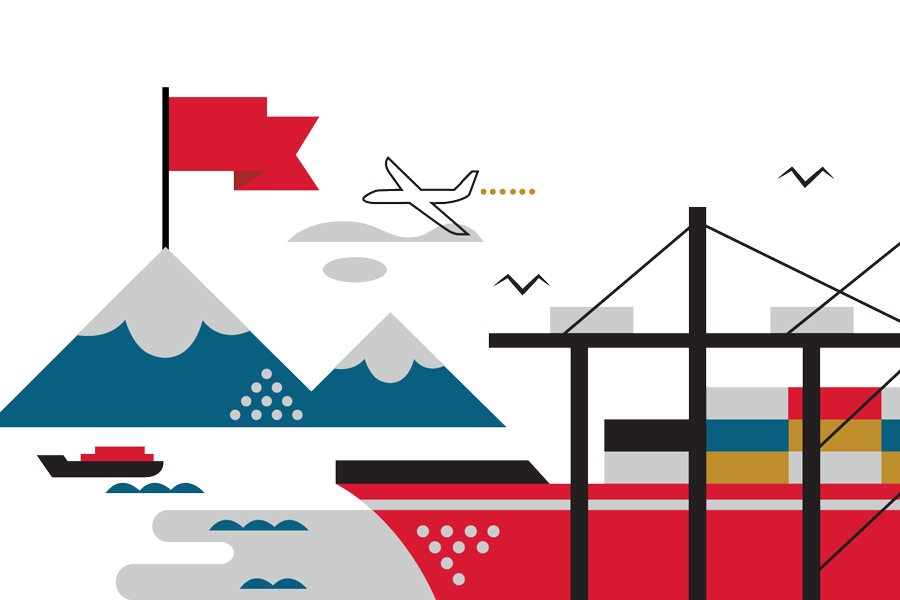Semi Trucks
Logistics
Lease & Maintenance
Buy Used Trucks

Updated July 31, 2025
Peak season 2025 is already taking shape—and consumers are shopping earlier, spending smarter, and expecting seamless, cross-channel experiences. Is your brand ready?
With inflation stabilizing, logistics capabilities improving, and omnichannel retail now the norm, holiday shopping this year is forecasted to be bigger, faster, and more customer-centric than ever. To succeed, brands must plan now to avoid missing out on revenue opportunities—or worse, damaging their reputation when it matters most.
Use this comprehensive guide to prepare your retail or e-commerce operation for a profitable and scalable Peak Season 2025.
The peak season calendar is expanding again in 2025. According to the Adobe Digital Economy Index, more than 48% of U.S. consumers plan to start holiday shopping by October, and 20% plan to shop as early as August, driven by early promotions, loyalty discounts, and concern about product availability.
Retailers like Amazon, Walmart, and Target have already announced early holiday sales campaigns starting in late September, blending back-to-school with early gifting.
Takeaway: Your peak planning should start by late Q2—earlier if you’re managing multiple channels or complex inventory.
Inventory planning has shifted from “just in time” to “just in case.” But now that inventory gluts in 2023–24 have eased, retailers are focused on balance. According to a 2025 NRF survey, 64% of retailers say demand forecasting accuracy is their top priority heading into the holidays.
To prepare:
Flexibility is key: Use 3PLs or multi-client warehousing solutions to scale capacity as needed without long-term commitments.
While parcel volumes are projected to grow 7–9% YoY, peak season shipping costs in 2025 are expected to rise 4–6%, according to ShipMatrix. Add in potential labor actions and a tight carrier market, and you need a flexible plan now.
Strategies to protect your margins:
Bonus: Show delivery estimates at checkout and offer package tracking via SMS/email to reduce WISMO contacts.
With generous holiday shopping comes high return rates. The average e-commerce return rate during Q4 is projected to hit 18.3% in 2025, especially in fashion, beauty, and electronics.
To create a positive post-purchase experience:
Brands that treat returns like a value-add rather than a loss leader are more likely to win repeat business in Q1.
Your website is your most valuable storefront—especially in Q4. Even a 1-second delay in page load time can reduce conversions by up to 20%, according to Akamai’s 2025 web performance benchmarks.
Pre-peak checklist:
Run real-time stress tests using platforms like Google Lighthouse, GTmetrix, or Cloudflare analytics to simulate holiday traffic.
The first three Google search results get over 54% of clicks, and during peak season, SEO-optimized product pages can directly impact Q4 revenue.
Start optimizing now by:
Bonus: Use high-res product photography and lifestyle content to reduce return rates and increase add-to-cart conversion.
Despite e-commerce growth, 74% of U.S. shoppers plan to do some of their holiday shopping in physical stores, according to Deloitte’s 2025 Consumer Holiday Study.
Focus areas for store readiness:
Ensure your store team is equipped to manage both foot traffic and digital order pickup workflows efficiently.
Buy Online, Pickup In-Store (BOPIS) and curbside grew 12% YoY last holiday and are now essential. According to eMarketer, nearly 50% of U.S. consumers will use BOPIS at least once during the 2025 holiday season.
Get it right by:
Poor execution of these services can lead to negative reviews—especially during holiday crunch time.
Today’s shoppers don’t think in terms of channels—they expect fluidity. According to Google, over 73% of holiday shoppers switch between devices or locations before making a purchase.
How to build a connected omnichannel experience:
Delivering a frictionless omnichannel journey will increase conversions—and keep your brand top of mind beyond the holidays.
Whether you're managing a direct-to-consumer operation or running multiple retail stores, Ryder’s scalable logistics network gives you the flexibility and speed to meet 2025’s peak season demands.
With Ryder, you get:
Ideally, by the end of August 2025. This allows enough time for forecasting, warehouse planning, staffing, and technology optimization.
Yes. A fulfillment partner like Ryder enables you to scale quickly without long-term overhead, access discounted shipping rates, and handle spikes in demand across all channels with advanced technology.